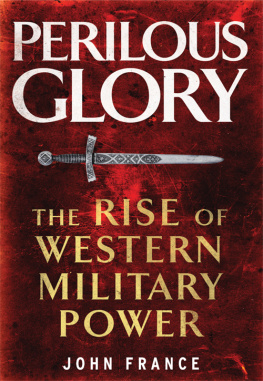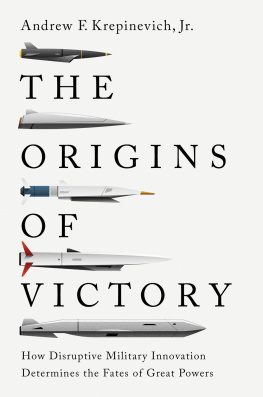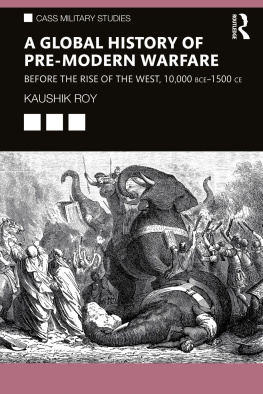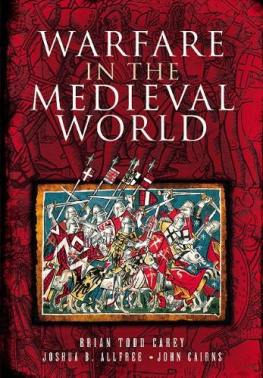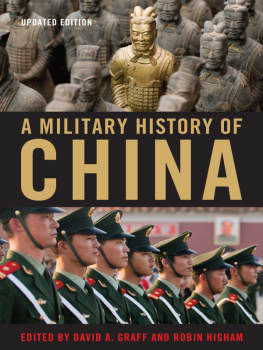


Copyright 2011 John France
All rights reserved. This book may not be reproduced in whole or in part, in any form (beyond that copying permitted by Sections 107 and 108 of the U.S. Copyright Law and except by reviewers for the public press) without written permission from the publishers.
For information about this and other Yale University Press publications, please contact:
U.S. Office:
Europe Office:
Set in Adobe Caslon by IDSUK (DataConnection) Ltd
Printed in Great Britain by TJ International, Padstow, Cornwall
Library of Congress Cataloging-in-Publication Data
France, John.
Perilous glory: the rise of western military power/John France.
p. cm.
ISBN 978-0-300120745 (cl:alk. paper)
1. Military history. 2. Military art and scienceHistory. I. Title.
D25.F84 2011
355'.03301821dc22
2011006437
A catalogue record for this book is available from the British Library.
10 9 8 7 6 5 4 3 2 1
CONTENTS
ILLUSTRATIONS AND MAPS
A watchtower manned by a warrior in Papua New Guinea, (19613). President and Fellows of Harvard College, Peabody Museum of Archeology and Ethnology. Photograph by Michael Clark Rockefeller.
Stele of the Vultures, dedicated by King Eanatum in celebration of his victory over the city of Umma, from Telloh (Ancient Girsu), early dynastic period (c.2440 BC ). De Agostini Picture Library/ Getty Images.
.
Egyptian chariot from the tomb of Thutankhamun, Pharaoh of Egypt (13331324 BC ). Griffith Institute, University of Oxford.
Relief from Sennacherib's Palace, Nineveh (c.700 BC ). akg-images/Bible Land Pictures.
Terracotta plaque with armed hoplite running (sixth century BC ). De Agostini Picture Library/Getty Images.
Terracotta Army of the First Emperor of China (c.210 BC ). Author's photograph.
Chinese bronze dagger-axes dating from the Shang to the Zhou dynasties (thirteenththird century BC ). Royal Ontario Museum/Corbis.
Bronze crossbow lock, Han dynasty (c.206 BC AD 220). Brooklyn Museum, Museum Expedition 1912, Museum Collection Fund.
Roman legionary re-enactment costume. Photograph by Roy Edwards.
Replica of a Roman ballista, Caerphilly Castle. Author's photograph.
Plaque depicting a Tang horseman (ninth century AD ). Author's photograph.
Crac des Chevaliers, Syria. Author's photograph.
Muhammad ibn Mahmudshah al-Khayyam, Mongol archer on horseback, Iran (early fifteenth century). bpk/SBB.
Medieval handgun. Illustration from Konrad Kyeser, Bellifortis (1405). MS Philos.63 Gttingen, Universittsbibliothek. akg-images/Erich Lessing.
.
Bourtange fortress, Groningen, The Netherlands. Frans Lemmens/Getty Images.
Jacob de Gheyn II (after), Waffenhandlung von den Rren Musquetten undt Spiessen (The Exercise of Arms) (1607). Plate 9. Trustees of the British Museum.
Illustration from the memoirs of Emperor Babur (c.1590). British Library Or.3714 f.270v. The British Library Board.
Dead confederate soldier in a trench beyond a section of chevaux-de-frise, Petersburg, West Virginia (1865). Library of Congress.
.
Sir Hiram Maxim with his Maxim machine gun (c.1885). Corbis.
American soldiers of Battery C, 6th Field Artillery, the Lorraine front, Beaumont, France (c.1918). Photograph by Sgt J.A. Marshall/Getty Images.
Elizabeth Southerden Thompson, Lady Butler, Scotland Forever! (1881). Leeds Museums and Galleries/Bridgeman Art Library.
French soldiers in frontline trenches near Verdun (c.1916). akg-images/RIA Nowosti.
French infantry attacking with bayonets (c.1914). Private collection.
.
Maps
The Mediterranean (c.1100 AD ).
The Middle East and west Asia. xi
China and the Mongol domination under Kubilai Khan (126094).
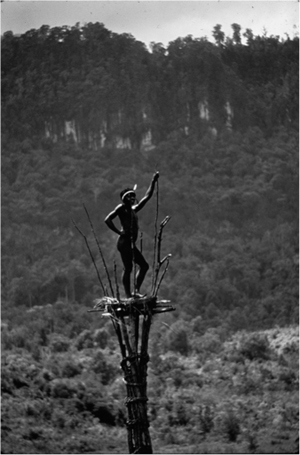
War before the state: a watchtower manned by a warrior against a neighbouring village. The Grand Valley Dani people of Papua New Guinea (Irian Barat Indonesia) were studied by the Harvard-Peabody Expedition of 19613. Despite such vigilance savage raiding was common, sometimes resulting in the extinction of whole settlements.
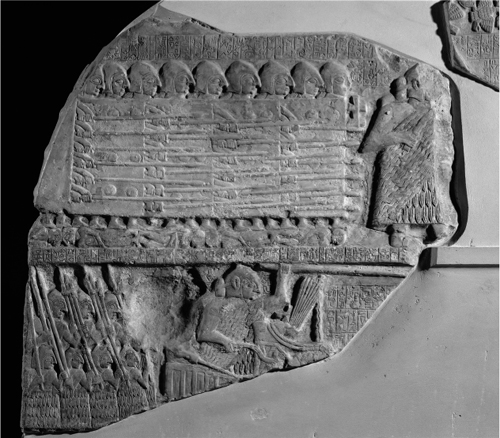
The Stele of the Vultures, Mesopotamian, c.2440 BC , depicting King Eanatum's victory over Umma. This is the first picture of an infantry phalanx, the close-order formation which would dominate warfare down to the Military Revolution of the nineteenth century.
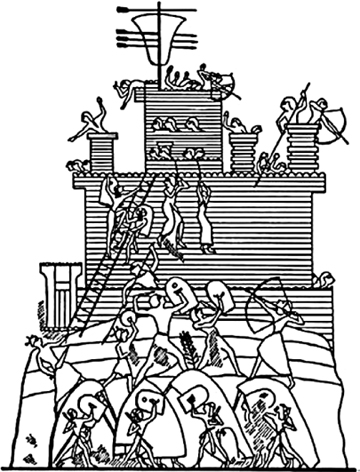
The tomb of Inty, late Egyptian Old Kingdom, c.2300 BC : the Egyptians besiege a Canaanite city. Siege was as vital as battle and often more important in agro-urban warfare because rulers controlled their lands from cities and fortresses. Here the Egyptians have seized the outer wall of a concentric fortification and are storming the inner.

Egyptian chariot from the tomb of Tutankhamun, Pharaoh of Egypt (13331324 BC ). Note the light structure and the yoke designed to attach two horses this would have made it very fast.
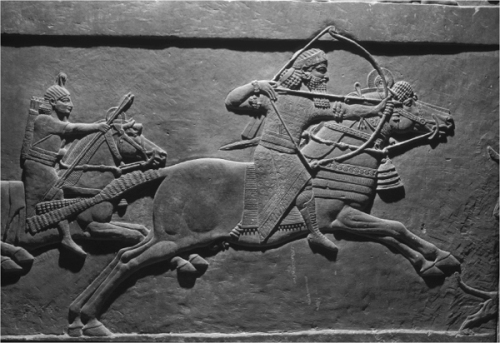
Real cavalry: Assyrian mounted archer of the seventh century BC . Earlier ninth-century illustrations show them working in pairs, one holding the reins of both horses while the other shoots, but this rider has an assured seat on his horse whose elaborate harness was also protective.
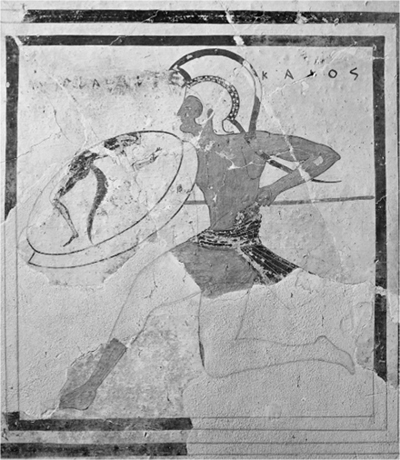
A Greek hoplite. Note how little armour he wears.
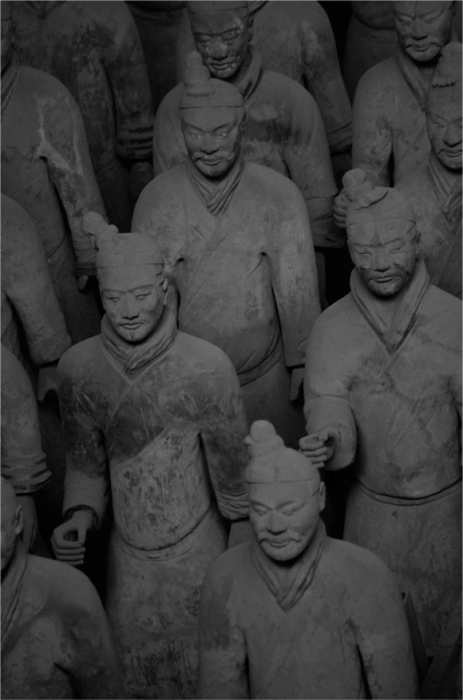
The Terracotta Army of the First Emperor of China dating from c.210 BC . These are figures of very well-equipped regular soldiers, and in this, the first of three pits, they seem to be in order of march.
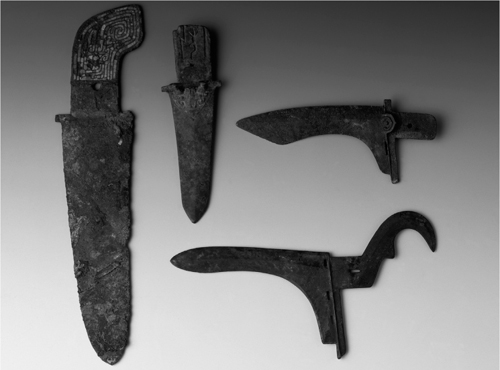
Chinese bronze infantry weapons including two dagger-axes which would have been mounted on poles. The dagger-axe was extensively used from the Shang (1600 BC -1050 BC ) down to the Han period (from 206 BC ) after which it was replaced by iron spears and halberds. Like the contemporary sword and dagger shown here it was a weapon for close-quarter fighting.
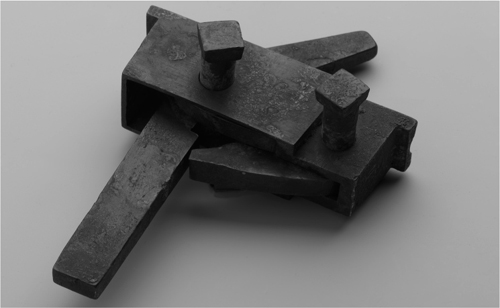
Next page
